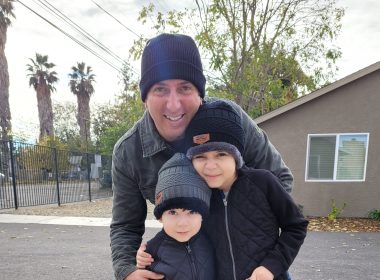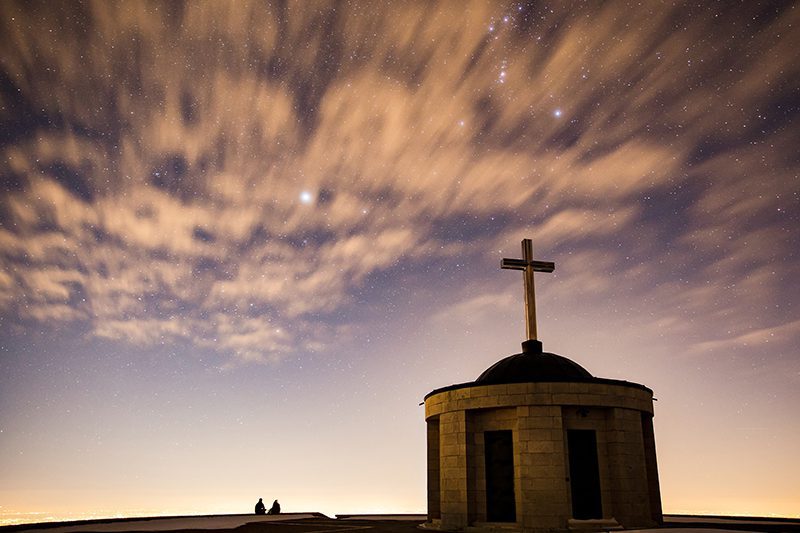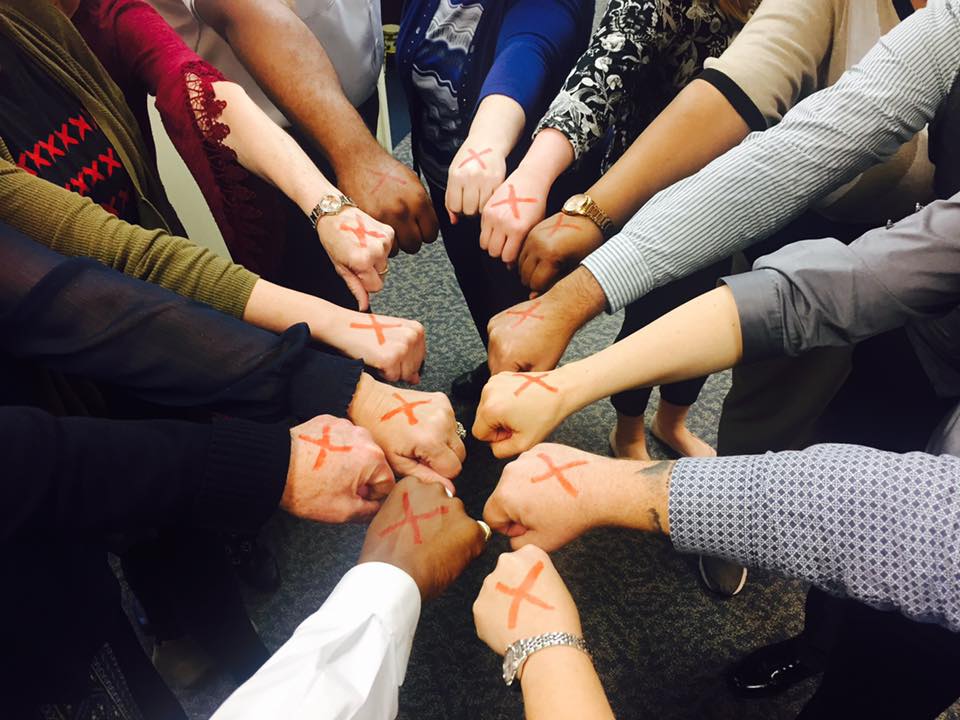We’re on a journey toward spiritual wholeness.
What is salvation?
It’s a change of status—from a state or condition before to an improved state or condition after, and at the heart of that process is the relationship between God and people. We can express what salvation means in terms of the presence and purposes of God, and describe the change of status as a growing awareness of God’s presence and an increasing participation in God’s purposes.
Imagine that you and I are part of a religious community in the ancient world. We look around and take note things aren’t so good right now. Every sphere of life is disordered and chaotic. Our community continually struggles to find food, natural disasters constantly threaten, and that’s when wild animals aren’t on our trail. Our village is always on the edge of violence with others, even though we’re all part of a larger nation of people. Inside the community is contention, strife between neighbors, within families. Each of us knows the reality of seeming to be at war within ourselves: I try not to do things I know will end badly, but somehow can’t seem to stop myself.
There are few significant signs revealing the presence of God, whose place among us would ensure peace and rightness. God seems far off, sometimes more angry than distant. Occasionally we glimpse moments of true communion, as when we are all pulling together in the face of a great tragedy, and differences disappear; we’re of one voice, on common ground. A sense of God is very close in these fleeting moments of goodness, when the barriers we naturally put up fall away into openness. We embrace these encounters, desiring more. They are good and right, this is what God wants for all of us, all of the time.
In my imagination as it runs along these lines, this community is inspired to describe an ideal picture of comprehensive peace and rightness, when God ordered existence to create harmony in every dimension of human life. It’s a picture of what life ought to be like: it’s what humanity experienced once, and it’s what God want us to experience again. We might well describe such an ideal portrait in a framework of four essential relationships.
First, is the foundational relationship between God and humanity. The story says the divine presence was once experienced without need for mediating institutions. People were freely open and present for God, nothing blocking real communion, no hint of falseness or defensiveness. Out of the wholeness of this prime foundational fellowship all others followed accordingly.
Next, in the relationship between human beings, there was likewise freedom and openness. The one for the other, in mutual cooperation and communion, soul to soul and body to body: person to person. No artificiality or covering up, together in common purpose and unified in God’s presence.
There also was no strife or struggle between humanity and the rest of creation. No threat or danger from the weather or wild animals, no disturbances or disruptions in the peace and patterns of coexistence.
Finally, because there was neither external conflict nor anxieties about their survival, there were no internal worries or frustrations. Consider the everyday things we struggle with inside ourselves, and imagine life without them. That’s sort of what this picture is. Everything, all things, are good.
Now think about the first half of the description of what salvation means—awareness of God’s presence. In such a completely harmonious set of relationships, we have no trouble affirming humanity’s full awareness of God. When we speak about the second half of the description of what salvation means—participating in God’s purposes—we can easily imagine how they fulfilled the role of caretakers for the rest of the created world they inhabited.
But that’s the ideal picture; our own reality is much different. There would be no need to make God’s presence known as active among us here and now if we were all living in that ideal world. God’s presence would already be fully known by everyone. As with the people in the ancient religious community we referred to earlier, we look around and observe two contrasting realities: how almost every experience we have is in some way a reflection of a disordered, less-than-good world; and there are also moments of goodness we connect with God. Why are the two pictures so different? We return in our imaginations to that ancient community, and see the story continues. Immediately after the idealized portrait is painted, there is another scene.
– Find a Salvation Army worship community near you westernusa.salvationarmy.org
– Find “Revelation: A non-scary approach, Volume I” (Frontier Press, 2016) by Major Philip Davisson at frontierpress.org.
We can see this bent toward the self in a number of attitudes and actions. When you objectify, demean, dehumanize another person. When you think God loves you because you are a worthwhile human being, but them, well that’s another story. When your own needs, comfort or safety become paramount, and social violence results from a “them or us” mentality. In short, when you satisfy yourself to the detriment of another, you are expressing the bent toward the self.
However, deep down we already know the trouble this causes. While it is true in general that we’re hard-wired for selfishness, we also demonstrate valuable abilities to work together for survival. The reality of cooperation in community life points to the critical necessity and desirability of wholeness. There actually seems to be a draw to community; we want and need to forge bonds with others. Yet the inner core inclination toward preferring the self over others works against this. The ancient origin story we’re talking about even points to this dilemma. Human beings, it says, were made for each other, partnership is built in. But the decision to act contrary to the way of life resulted in ways of being which prevent harmonious mutuality.
Although we are addressing this aspect of our humanity in an article about personal salvation, salvation is never private. It is impossible to speak of this inclination common to everyone without also talking about how it shapes the health of relationships. The bent toward self is an impediment to health and well-being in community. It requires a risk to stop the natural yet counterproductive self-ward inclination. It’s not easy to trust God to provide for you through the agency of other people, even as God provides for them through you. The measure you practice the bent toward self becomes the strength of the obstacle to goodness.
This principle is on display in the opening chapters of the story of humanity and God. Everything in this ideal world was lost. All of life from that point forward—for them, for us—would be characterized by tension, enmity and strife in relationships. They chose self over the “other” and thereby experienced for the first time the less-than-good in life. And that, says the story, is why each of us is like we are. Selfishness is an innate human characteristic. Their story is the human story, and each of us is part of it.
The theological word to describe the bent toward self and that action flowing from this universal human characteristic is sin. We might call the decision portrayed in the primordial story the originating sin. From this core of our human nature comes a multiplicity of destructive attitudes and actions we call sins, plural. From sin come sins. This inclination drives us toward behaviors serving the self at the cost of goodness for others, and to the detriment of our own well-being.
Loss of community is inevitably linked to losing connection with God, for God is experienced in significant ways as we are bound to one another. When an individual has an impediment in a human relationship especially due to intentional harm, praying to God may well be difficult if not impossible. Clearing the relationship with the other person through reconciliation restores free flowing communication with God, but refusing to love the neighbor in this way can lead one to stop listening to God altogether.
We conclude by returning to the focus on the individual person in this state of disorderedness. In the telling of our story, the humans in the emerging community experienced an elemental loss in each of the four foundational relationships, a loss recorded as a change from the ideal full connection to life, to the world of enmity spiraling toward death. The individuals’ balanced sense of self-regard and mutuality toward each other is shaken, and they are condemned to battles within, desires, impulses and inner feuds radiating outward, contorting harmony and communion into unbalanced relating. Their life in the natural world becomes a constant struggle to survive.
Most significant, we see humans immediately distancing themselves from God, signaling the disappearance of the direct benefits of an immediate divine presence. The permanent exile of humanity from this ideal world, where God’s life-giving immediate presence was their daily experience, expresses the reality of death for us all. We also can discern from this story the tenet of total incapacity: apart from God, humanity not only cannot attain a saving knowledge of God, but even the most basic awareness of the presence of God is gone. We cannot begin a journey to God absent a guiding hand toward the first step.
The discovery of how a person can start on the path to life is part of an even greater story. Life as a person of God is marked by the renewal of once-disordered relationships. Our journey toward spiritual wholeness is described in every stage by a growing measure of our own awareness of God’s powerful presence, and by an increasing alignment of who we are and what we do, as our participation in God’s purposes is empowered by the divine source of life.
[button color=”black” size=”normal” alignment=”none” rel=”follow” openin=”newwindow” url=”https://caringmagazine.org/young-faith/”]You also might enjoy our article on charting the future of religion.[/button]








